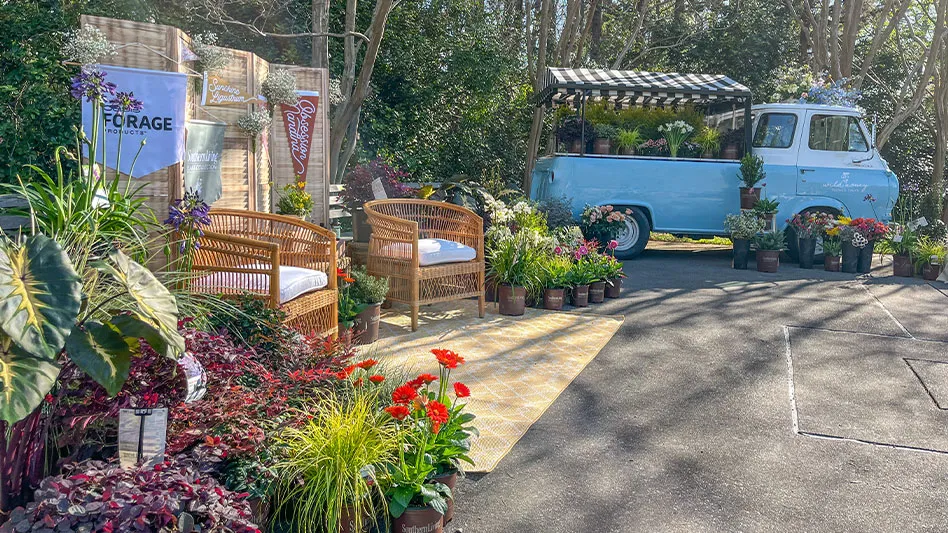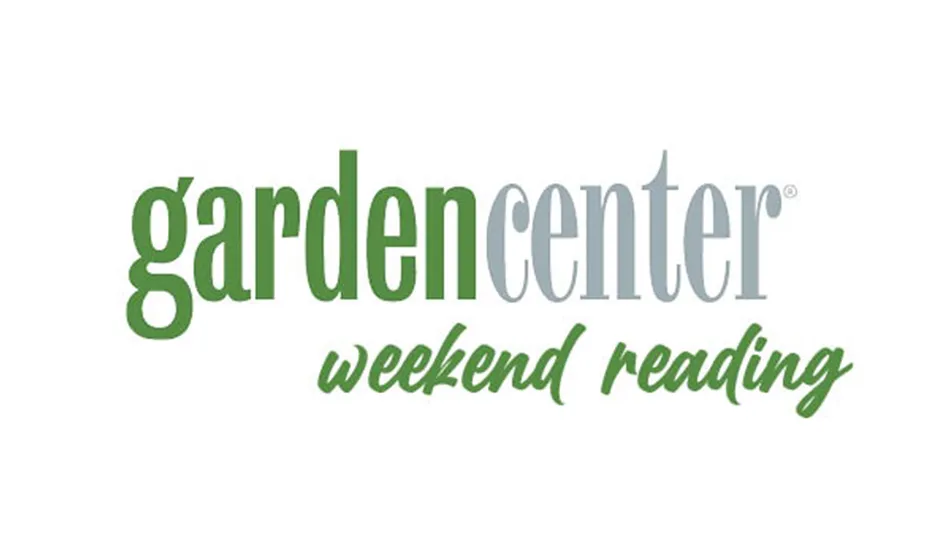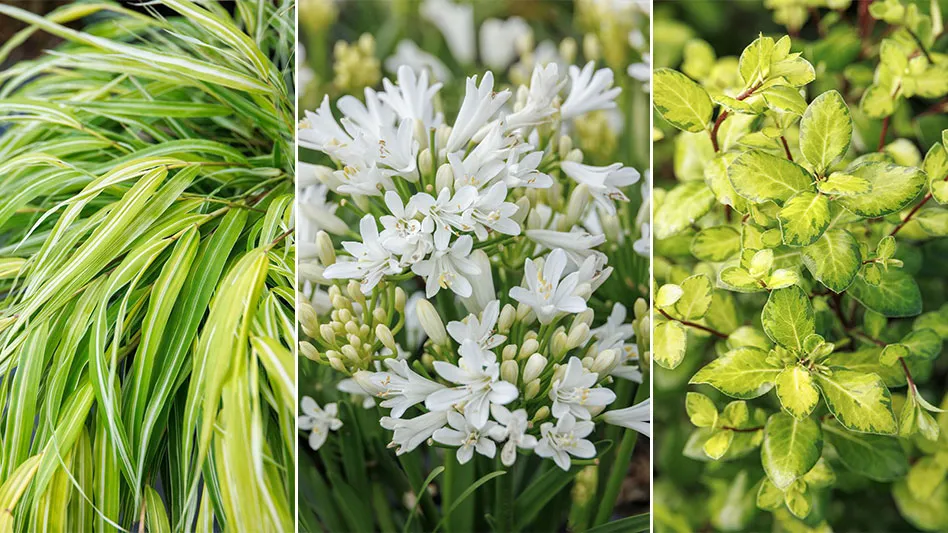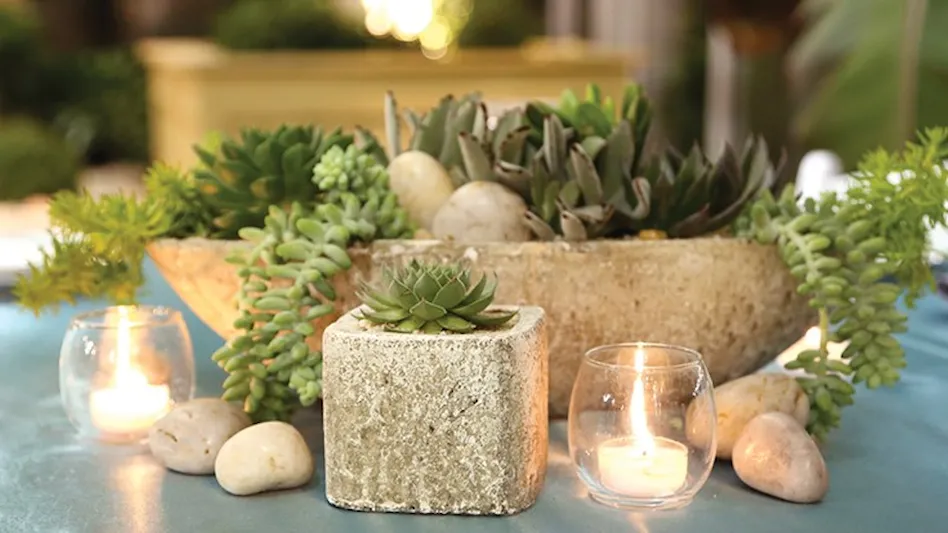
PHOTO COURTESY OF MATT LOVEJOY
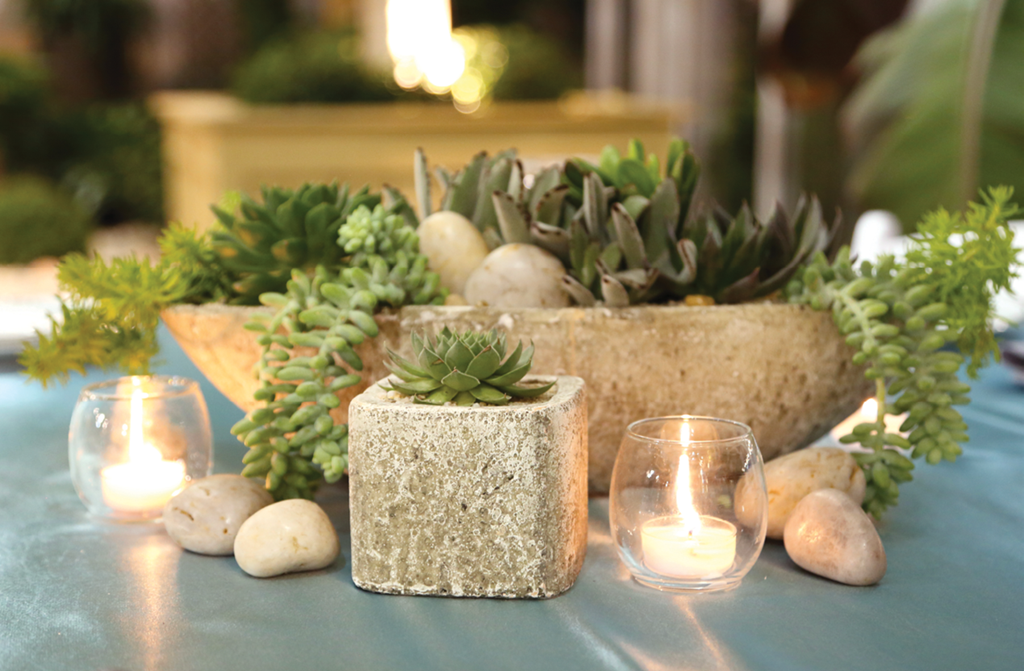
When Mother’s Day was still weeks away, the team at Cactus & Tropicals was focusing on creating a succulent garden backlog. As leading sellers in store and via web orders for the Salt Lake City, Utah, independent garden center, the planters seemed ideal for holiday sales. Made in advance, they’d look even better when the Mother’s Day crunch hit. But General Manager Kathy Harbin had one problem: the “extras” sold faster than the team could make them.

Harbin, who’s been with the full-service IGC since 1989, remembers the pre-fervor succulent days. Started as a cactus specialty shop, the IGC was always a destination for cactus aficionados. Not so with succulents. “Succulents were really not even a thing,” she says. “It was just not something people were interested in.”
The garden center’s emphasis on water-conserving plants triggered greater interest in succulents as far back as the 1990s drought years, but nothing like the recent demand. “Now they’re so popular, we cannot keep succulents in stock,” Harbin says. “We’re selling five times as many as we were even three or four years ago.” For example, one customer bought 2,100 2-inch succulents for an Earth Day giveaway this spring.
Zip to the East Coast and succulent excitement is alive there, too. For years, cactus and succulent shoppers sought out Old Country Gardens in Wilmington, Delaware, for their plant fix. But interest has definitely escalated. “We’ve been promoting cactus and succulents since we opened in 1970,” says Steve Keulmann, owner. “But we’ve probably doubled or tripled the selection in the last few years.” He estimates succulents outsell cacti by about three to one.

For anyone sensing waning enthusiasm for these plants, GrowIt! co-founder Mason Day suggests another explanation. “If you look back five years ago, the succulent supply wasn’t there. We felt the demand more because everybody wanted them and nobody had them. Now everybody has them, but still people want them,” he says.
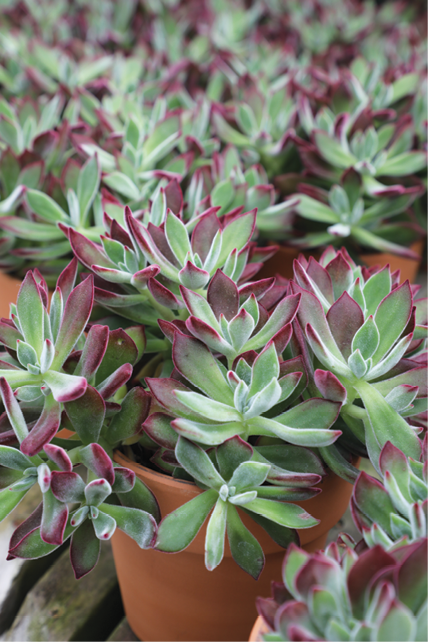
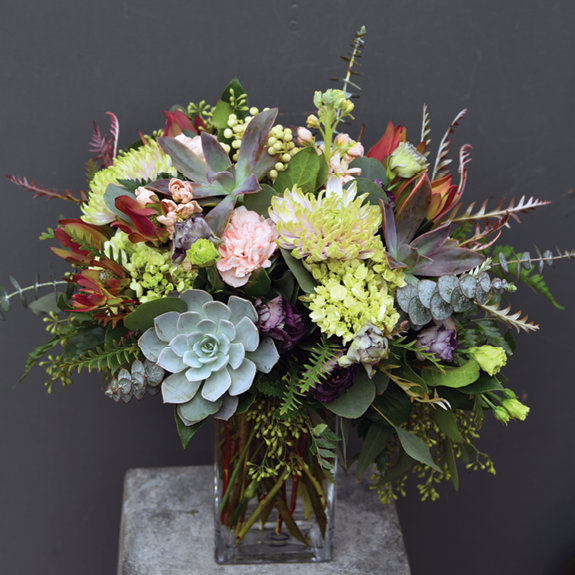
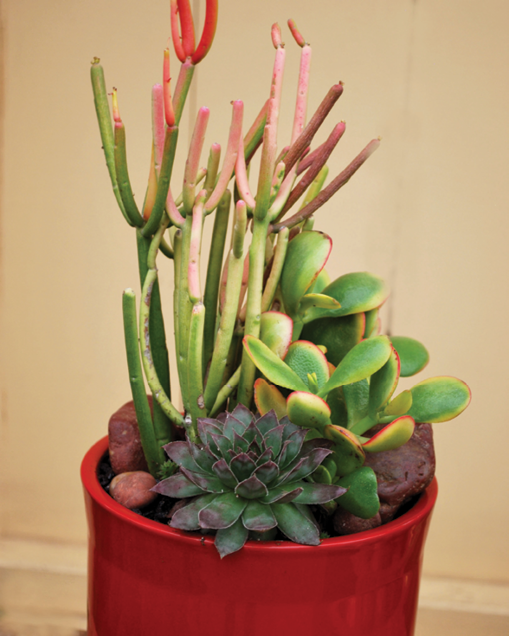
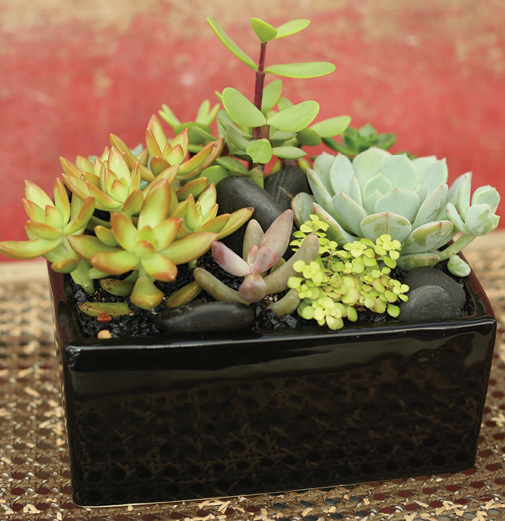
Mass appeal
Some credit Millennials for the succulent craze and their impact is felt. Of the 750,000 people on the GrowIt! app, 50% are under age 35. Echeveria was the most popular plant with the app’s 100,000 active users during March 2019. Houseplant succulent aloe came in second and all-inclusive “cactus” hit No. 12. But generational thinking could cost you sales.
“Everybody’s interested; it’s not just younger people,” Harbin says. “Older people who have had annual containers on their front porches for 25 years are really excited they can do cactus and succulents now. People are discovering there’s no down side. Everything about them is positive.”
Keulmann agrees that succulents and cactus have cross-generational charm, but he’s also noticed a strong contingent of younger, 20-something consumers drawn to cactus. “They’re not moving up from succulents. They’re just cactus lovers,” he says.
As younger consumers’ experience increases, Day believes what they buy and where they buy will shift. “We’re still dealing with an audience of consumers that are just starting to realize what a good plant looks like versus a bad one. That success can depend on where they acquire some of these plants and all plants are not created equal or bought equally,” he says.
IGCs who intervene and educate can win. “These people are earning their stripes. They want to know, ‘What should I be growing next?’ But it should be our industry that’s telling them that, not somebody they’re looking up that doesn’t know how to spell echeveria,” Day says.
Courting collectors with cultivars
Day says that GrowIt! users now want more specific information about plant varieties. “Just ‘cactus’ isn’t necessarily good enough anymore,” he says. “There’s an aspect of collecting and people want to show off and say they have 36 varieties or 36 species. Over the last year, we’ve been adding tons of different varieties of cacti.”
The thirst for specifics doesn’t surprise him. “We were the generation that grew up collecting everything — and now we’ve turned that passion to plants,” Day says. “These people that started getting a couple plants need to collect more and more and more, and they’re looking for different varieties.”
Beyond some cactus connoisseurs, the collecting bug hasn’t bit at Cactus & Tropicals. “There are a few people — real cactus people — who are trying to find something they don’t have, but it’s not very common,” Harbin says. “People just like to see things that look cool and are easy to take care of — and that we have!”
About 20% of Old Country Gardens’ customers are keen on collecting, but the balance aren’t. Keulmann feels that poor labeling practices by succulent and cactus growers is partly to blame. “The trouble is these plants are not labeled, except for generic labels. [Proper labeling] would really be helpful to have, so if someone did want three different varieties of a certain plant, they had that information,” he says. So his staff fills the gap with custom signage.
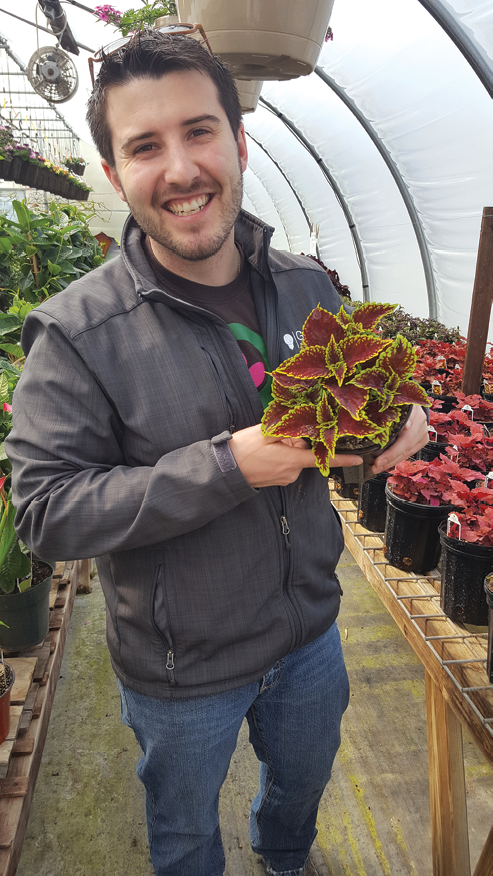
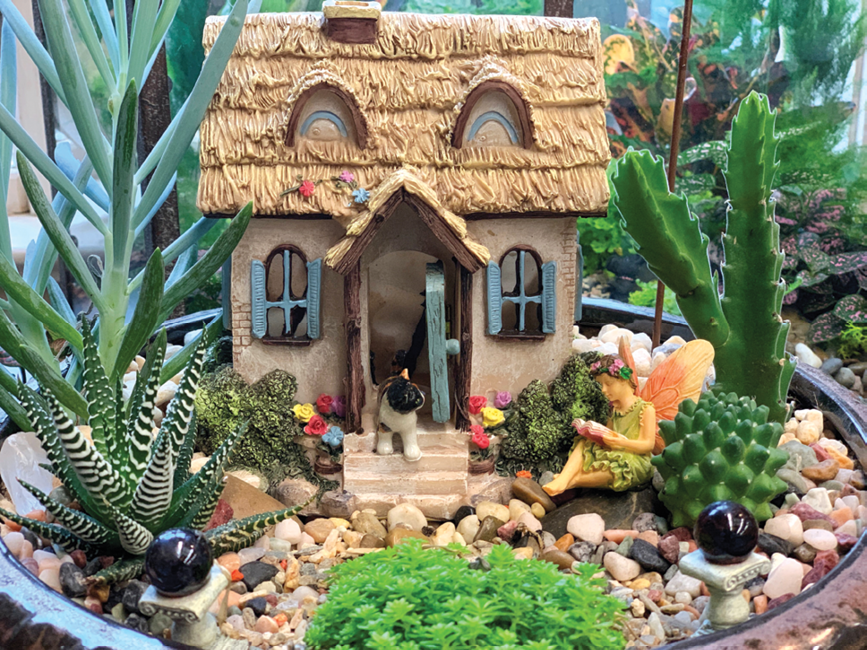
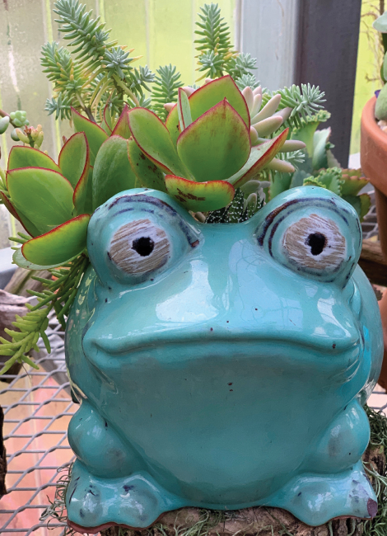
Keeping your selections sizzling
With the profusion of retailers offering succulents and cactus, separating your IGC from the pack is crucial. Quality and merchandising are priorities for the hardy and non-hardy selections Cactus & Tropicals promotes for exterior and interior use.
“Having people who can display them in a way that looks really cool is important. Our customers come in and they’re always seeing something interesting — and every plant we have on the shelf looks perfect,” Harbin says. “If it doesn’t look good, we get it off the table. Everything needs to have the ‘wow’ factor.”
Highlighting easy care is essential, too. “The low-maintenance aspect is huge. We sell them as being not as needy as other plants. You don’t need to water them every day if they’re on your front porch,” Harbin says. “And because they can be low-maintenance and be beautiful and they conserve water, all those things make them really attractive for people.”
Keulmann promotes an extensive selection of non-hardy succulents and cactus for use indoors and out.
“Customer interest really picked up since we started displaying them outside in front of the store as well as inside,” he says. “They’re still tropicals and not hardy here, but so many people are using them outdoors in containers and pots, not just as houseplants.”
Day suggests a mind shift, if the shoe fits. “For a long time, garden centers viewed succulents as something like an add-on. We were just putting them on an endcap or in a gift aisle,” he says. “We’ll put two tables out front for geraniums, but we have yet to give that space to succulents. Maybe it’s their time for prime time.”
Harbin is a believer. “Succulents are kind of like the perfect plant. I can’t think of an application where they don’t work. We even use them for our wedding arrangements and boutonnieres … They can be used for every application where you want plants or flowers.” All it takes is the inspiration and ingenuity to step up and stand out.

Explore the June 2019 Issue
Check out more from this issue and find you next story to read.
Latest from Garden Center
- Registration opens for Darwin Perennials Day
- Weekend Reading 5/3/24
- Weekend Reading 4/26/24
- Smith Gardens assumes operations of Skagit Horticulture
- Beneficial insect sachets now included with Monrovia mandevilla
- Pennsylvania Horticultural Society shares top gardening trends from 2024 Philadelphia Flower Show
- Garden Media Group announces the fifth annual Women in Horticulture Week
- Eason Horticultural Resources announces the addition of Phil Perry
